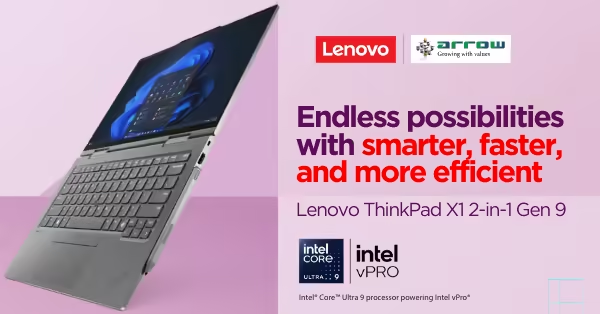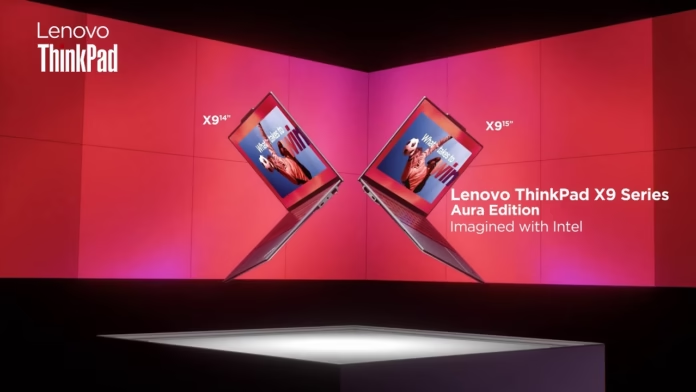Let’s face it—AI PCs are flooding the market, and most of them scream innovation while whispering compromise. But once in a while, a machine comes along that strikes the right balance. That’s what Lenovo has delivered with the ThinkPad X9-14 Aura Edition.
Aimed at the modern workforce but grounded in the reliability ThinkPad is known for, this laptop blends performance, portability, and a surprising number of premium features—all without blowing a hole in your IT budget. It’s a strong contender for any business upgrading its device fleet, especially with the impending end of Windows 10 and the rise of local AI-powered productivity.
A Business Laptop That Knows Its Audience
The ThinkPad X9-14 Aura Edition, now powered by Intel’s Core Ultra 200 series chips, isn’t chasing raw power like a gaming rig—it’s built for productivity, endurance, and style.
When Lenovo says this is a Copilot+ PC, they’re positioning it for professionals embracing Microsoft’s AI-enhanced workflows. Whether it’s summarizing documents, generating meeting notes, or assisting with code, the on-device AI capabilities are part of the broader business tech evolution. As part of the AI PC ecosystem, it handles real-time, low-latency tasks that cloud AI simply can’t.
And here’s the kicker—despite being a polished, enterprise-grade laptop, it’s priced significantly lower than its closest competitors. Compared to Dell’s Pro 14 Premium, which shares the same processor family, Lenovo’s offering comes in hundreds of dollars cheaper—and with a better display and webcam.
This kind of value is what we at Arrow PC Network look for when recommending future-ready business tech to our enterprise clients.
First Impressions: Sleek, Solid, and Surprisingly Sharp
Lenovo didn’t just check boxes. The chassis feels premium—light but sturdy, cool to the touch with a 50% recycled aluminum body, and it holds up under pressure. I’ve used a lot of laptops that look good on paper but falter in daily use. The X9-14 doesn’t.
And that “Aura Edition was imagined with Intel” startup message? It may sound like marketing fluff, but there’s actual thought behind the engineering collaboration here.
The OLED 2.8K display is crisp, bright, and anti-glare, making it perfect for presentations or spreadsheet-heavy days. For teams in media, design, or any visual-heavy field, it’s a clear winner. The 8MP 4K webcam is another standout—especially for remote leaders or sales teams who need high-resolution video without relying on external hardware.
At Arrow PC Network, we’re seeing a shift: more companies are investing in high-quality webcams and displays not just for remote work, but also for showcasing products or conducting virtual client meetings. Devices like this make that easier—and more cost-effective.
The Good: Speed, Looks, and Business-Centric Features
Here’s where Lenovo nails it:
Power-efficient Intel Core Ultra processors that can handle a full business day without a recharge.
Windows Hello facial recognition with IR support and a fingerprint reader for fast, secure logins.
A quiet, effective cooling system that doesn’t roast your lap.
And a trackpad that finally ditches the red ThinkPad nub (sorry purists, but the new haptics are better).
Sure, it’s not the fastest laptop in its class. AMD’s latest Ryzen chips still have an edge in multitasking, and Dell’s Pro 14 Premium wins slightly in battery life thanks to a bigger battery and IPS screen. But Lenovo gives you a better visual experience, stronger build quality, and pricing that scales well for bulk corporate orders.
From our experience providing IT Services by Arrow PC Network – Lenovo, this model is hitting the sweet spot for companies upgrading their fleets for hybrid work environments.
The Drawbacks: Fewer Ports, Fewer Options
If there’s a caveat, it’s the port selection. Lenovo only offers:
1 HDMI
2 Thunderbolt 4 ports
1 audio jack
No USB-A. No SD card slot. That means a docking station or hub is basically mandatory. And with only one M.2 2230 SSD slot and no RAM expandability, what you buy is what you’re stuck with—so spec it right the first time.
To be fair, these limitations aren’t unique to Lenovo. Intel’s 200-series platform seems to be steering OEMs in this direction. But it’s something to consider if your team often uses legacy peripherals.
Performance: Practical, Not Flashy
The review unit ran on an Intel Core Ultra 7 258V, with 32GB RAM and a 1TB SSD. The performance was solid—not spectacular, but more than enough for spreadsheets, light AI inferencing, multitasking, and some basic creative workloads.
What impressed me was how well it handled day-to-day business apps, cloud platforms, and even some edge AI tasks with Microsoft Copilot. If your company is investing in AI adoption or deploying AI PCs for distributed teams, this is the kind of balanced, long-term device that fits into that strategy.
It may not outpace Dell’s Ultra 7 268V version in raw numbers, but the differences were marginal—often under 5%. In some GPU benchmarks, the Lenovo actually outperformed Dell’s higher-spec device. Go figure.
Battery Life: A Decent Tradeoff
While Dell lasts longer on paper, Lenovo’s battery still delivers well over a full workday—two days of moderate use, depending on your workload. It’s a trade-off: Lenovo prioritized display quality and speed; Dell leaned into power efficiency.
Which one’s right for your team depends on your workflow.
A Smart Buy for the AI-Ready Business
The ThinkPad X9-14 Aura Edition may not win every spec race, but in terms of overall usability, design, value, and readiness for AI-driven productivity, it’s one of the most thoughtfully made laptops of 2025.
It’s clean, corporate-friendly, and sturdy enough to survive daily wear and tear. It’s exactly the kind of machine we recommend when clients at Arrow PC Network ask for a future-proof, cost-effective, AI-ready device for their workforce.
Is it perfect? No. But it’s balanced. And that’s what makes it an excellent choice for modern business.
If your company is considering an upgrade in 2025, this is a model worth shortlisting—and if you’re building your AI PC strategy, it might just be your smartest next move.





